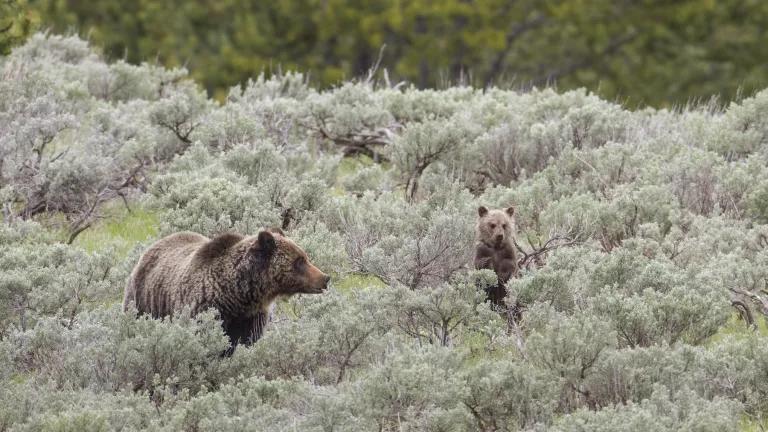
GANDHINAGAR, India — NRDC is participating in the 13th meeting of the Conference of the Parties to the Convention on Migratory Species (CMS), which is a global treaty meant to conserve and protect migratory species of animals and their habitats.
This week in Gandhinagar, India, the now 130 countries that have ratified the CMS treaty took decisions to list several species on the CMS Appendices, including mainland Asian elephants, jaguars, smooth hammerhead and oceanic white tip sharks, the great Indian bustard, and others.
They also looked at cross-cutting threats to migratory species such as power line transmission and renewable energy siting, plastic pollution, light pollution, insect decline, ocean noise, bycatch, live capture of cetaceans, linear infrastructure development and, of course, climate change. Interestingly, the parties talked about the value of learning about animal behavior, mainly social interactions between sperm whales and nut-cracking chimpanzees, and took decisions to further incorporate behavioral elements into programmes of work for listed species.
When we here the term “migratory,” we tend to think of the seasonal migrations we see on TV like the wildebeests crossing the Serengeti ecosystem between Tanzania and Kenya or monarch butterflies making their ways north from their winter breeding grounds in Mexico. But “migratory” under this treaty, now ratified by 130 countries, means much more.
Officially, it’s a species whose individuals “cyclically and predictably cross one or more national jurisdictional boundaries.” Over the now four decades since the treaty first entered into force, however, the Parties have taken a broad view of the interpretation of “migratory.” Really, it really means that any animal that they think might cross a border can be listed on the CMS Appendices.
At CoP12 in Manila, Philippines, in 2017, the Parties took this definition for a test ride, successfully listing chimpanzees, giraffes, lions, leopards, and other species on the CMS Appendices, despite challenges from mainly southern African countries that they were not migratory species in the traditional sense. A proposal to list the jaguar and was adopted here at CoP13, further testing the definition, along with the patience of countries who consistently oppose international protection for wildlife.
If a species is listed on Appendix I of CMS, the Parties have agreed to prohibit “taking” of that species, which means they won’t allow hunting, fishing, capturing, harassing, deliberate killing, or attempting to engage in any such conduct for that species. And, they agree to endeavor to conserve and even restore the habitats of the species to the point where they are no longer threatened with extinction.
For NRDC supporters, this probably sounds familiar. At a base level, it’s the same as the fundamental prohibitions and obligations in the US Endangered Species Act, which has played a huge role in NRDC’s work since the organization was founded.
So, perhaps even more than the Convention on the International Trade in Endangered Species of Wild Fauna Flora (CITES), which is more well-known but also more limited in scope as it only addresses the threat of international commercial trade in wildlife, CMS could become that global species protection law we so desperately need. It’s much broader in scope, though key countries are still not Parties (including the US, Canada, China, Indonesia and Russia)—perhaps we can change that in the coming years.
Given the dire warnings issued by the UN in May that about one million face extinction within the next few decades absent transformational change, existing tools like CMS need to be used to their fullest affect if we are to save our species from extinction and begin to recover what we’ve lost.
But, the Parties to CMS would have to recognize the opportunity and act accordingly, including scaling up the effort to list and protect species and improving the legal architecture of the treaty.
The new CMS Executive Secretary, Amy Fraenkel, shows signs of wanting to do big things with CMS, which is helpful. In her opening remarks, she said that listing 20 or 30 species on the CMS Appendices wasn’t keeping pace with the biodiversity crisis we face, and that perhaps we need to “scale up our level of ambition.” NRDC agrees.



